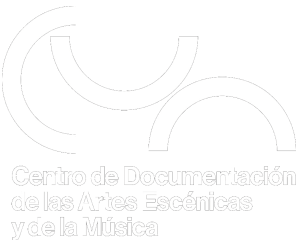The chittarra atiorbata and the guittare theorbée a reappraisal
Hall, Monica ( 1938- )
The chittarra atiorbata and the guittare theorbée a reappraisal / HALL, Monica .-- London; Oxford : Oxford University Press, , 2011:
Early Music -- Vol. 39, núm. 1,Feb. 2011, p. 25
RESUMEN: Giovanni Battista Granata's fourth book of music for five-course guitar, Soave concerti di sonate musicale, printed in Bologna in 1659, includes five pieces for the chittarra atiorbata, and the Oxford manuscript Pieces de guittarre de differendes autheures recueillis par Henry François de Gallot, copied between 1660 and 1670, twelve pieces for the guitarre theorbée. It has often been assumed that these pieces were intended to be played on the same instrument.However, significant differences in the way the two instruments are tuned and strung suggest that the music in these sources is intended for two different instruments. Granata's Chittarra atiorbata was guitar-shaped with five courses on the finger-board tuned to the same intervals as the five-course guitar and seven diapasons descending stepwise from the fifth, lowest sounding course. Gallot's guittare theorbée had five courses on the fingerboard tuned to a major or minor common chord with seven diapasons descending stepwise from the third course and therefore overlapping with the courses on the fingerboard. It may have been more closely related to the mandore with a lute-shaped body than to the five-course guitar. There are two other sources of music for an instrument tuned in the same as that of Granata, and other references to the chittarra atiorbata. In none of these sources is it clear whether exactly the same instrument is intended or whether it had a lute-shaped or guitar-shaped body. Palabras clave: Guitarra; chitarra atiorbata; guittare theorbée; tiorba; Granata, Giovanni Battista; Talbot, James.
The chittarra atiorbata and the guittare theorbée a reappraisal / HALL, Monica .-- London; Oxford : Oxford University Press, , 2011:
Early Music -- Vol. 39, núm. 1,Feb. 2011, p. 25
RESUMEN: Giovanni Battista Granata's fourth book of music for five-course guitar, Soave concerti di sonate musicale, printed in Bologna in 1659, includes five pieces for the chittarra atiorbata, and the Oxford manuscript Pieces de guittarre de differendes autheures recueillis par Henry François de Gallot, copied between 1660 and 1670, twelve pieces for the guitarre theorbée. It has often been assumed that these pieces were intended to be played on the same instrument.However, significant differences in the way the two instruments are tuned and strung suggest that the music in these sources is intended for two different instruments. Granata's Chittarra atiorbata was guitar-shaped with five courses on the finger-board tuned to the same intervals as the five-course guitar and seven diapasons descending stepwise from the fifth, lowest sounding course. Gallot's guittare theorbée had five courses on the fingerboard tuned to a major or minor common chord with seven diapasons descending stepwise from the third course and therefore overlapping with the courses on the fingerboard. It may have been more closely related to the mandore with a lute-shaped body than to the five-course guitar. There are two other sources of music for an instrument tuned in the same as that of Granata, and other references to the chittarra atiorbata. In none of these sources is it clear whether exactly the same instrument is intended or whether it had a lute-shaped or guitar-shaped body. Palabras clave: Guitarra; chitarra atiorbata; guittare theorbée; tiorba; Granata, Giovanni Battista; Talbot, James.

